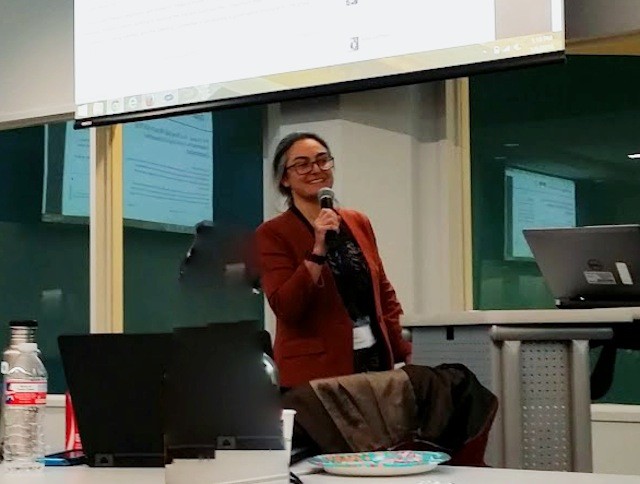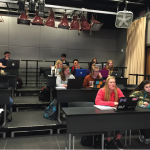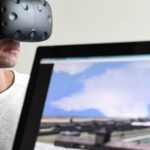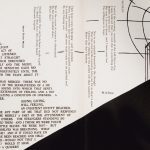By Ece Turnator and Hannah Alpert-Abrams
More than eighty librarians, digital scholars, technologists, and administrators convened at the University of Texas at Austin in January to address the question: how do digital tools affect teaching and learning in today’s classrooms? The THATCamp on Digital Pedagogy took place on January 5-6, 2016 in University of Texas at Austin Libraries’ newly opened space, the Learning Commons. The organizers were digital humanists and librarians from St. Edward’s University, Southwestern University, and The University of Texas at Austin. The attendees hailed from various parts of the country, benefiting from the presence of the annual conference of the Modern Language Association in Austin this year.
A THATCamp is an “unconference” in which “humanists and technologists of all skill levels learn and build together in sessions proposed on the spot.” Our THATCamp on Digital Pedagogy included sessions on a wide array of topics ranging from student involvement with digital tools to the evaluation and publication of public-facing student work. All in all there were about 25 sessions over the course of two days, as well as three workshops: one on Omeka, a tool for creating digital exhibits; one on Digital Pedagogy as it relates specifically to the Humanities; and a third on Social Annotation, or group markup of shared documents. The THATCamp sessions were devoted to discussions about best practices and the evolving landscape of tools for digital pedagogy.
Most sessions produced an extensive set of notes and resources that the reader can find by clicking on the session notes on the schedule here.
A number of sessions were devoted to the challenges and advantages of digital projects assigned as student group work. For example, “Teaching Digital Humanities in the Online Setting” underscored the value of thinking long-term about student work and giving students the opportunity to create their online presence. By using platforms such as Domain of One’s Own, for example, students can create a portfolio of their college work that can follow them into life after college, thus raising the bar for student responsibility and for the quality of the work completed. The portfolio gives students some concrete work-products that they can show to prospective employers. Other sessions touched on the management of interdisciplinary or collaborative projects, evaluation of student work, training instructors and students to use digital tools, managing the level of expectations of teachers and learners, as well as the difficulty of keeping a constant and open feedback loop in a classroom from the beginning to the end of the digital learning experience.
The challenges of assessing the quality of student work and of making it public – challenges exacerbated by complicated rules about student privacy in FERPA laws – were discussed in a number of sessions. Attendees found that various kinds of literacies that are involved in the creation of digital projects and discussed the importance of communicating the intended learning outcomes of class projects to students from the start. Students’ fear of failure, the session participants argued, sometimes gets in the way of the learning experience. Instructors discussed various ways to give students control over their work, to train them to become active learners and to incorporate a sense of play in teaching. They also emphasized the need to teach –and learn for themselves — comfort with failure. The session “Fail Stories” demonstrated that faculty comfort with failure can have mixed results: “productive discomfort” may be reviewed in a negative light by students, which might in turn have a negative impact on tenure decisions for faculty.
The importance of building accessible digital projects was the subject of the “Access and Inclusivity” session, which sought to address the needs of everyone from blind users who depend on screen readers to students who lack computers in their home or whose racial, sexual, or gender identity comes into conflict with an interface design. A challenging session for all involved, it was apparent that underlying assumptions about the needs of end-users (whether they are students, faculty, or the general public) have a significant influence on scholars’ ability to reliably create accessible projects. The session produced a list of resources, including the Kairos special issue on web accessibility.
A number of sessions were dedicated to skill development and digital tools. These sessions highlighted important resources like DIRT and GeoDIRT (registries of digital research tools), as well as lesson plans, self-help articles, and detailed course syllabi for introductory-level Digital Humanities courses to help instructors, departments, and institutions forge their own paths in teaching with digital tools and creating more integrated learning experiences for their students.
Crowdsourcing and collaboration, especially student collaboration on digital projects, were discussed in multiple sessions. Along the same lines, “Networked Pedagogy” discussed networked learning environments, such as federated wikis and peer-review, especially in large classroom settings, as well as the challenges of providing structure to networked learning environments when the goals and outcomes are not well-communicated and understood. Whether active learning techniques such as the ones used in Reacting to the Past — a role-playing history curriculum — could be considered part of the networked pedagogy ecosystem was one of the interesting questions discussed in this session.
Other topics that produced lively and fruitful discussions included:
- Digital Humanities and the Sciences
- Gender, Diversity, Engaged Scholarship and Digital Humanities
- Digital Humanities and the City
- Metadata Training / Game Brainstorming
- Digital Humanities and Entrepreneurship
- Forming Productive Partnerships between Archives and Classrooms
- Creating a Community of Practice on Digital Scholarship at UT
The Digital Pedagogy THATCamp offered scholars and teachers new to the field of Digital Humanities opportunities to share ideas and resources and network with others working in the field. It brought together a very active group of practitioners who focus on many facets of digital pedagogy and gave attendees a solid overview of the rewards and challenges of active student engagement in a classroom setting. If pedagogy in general is essentially about students becoming active learners, creators of scholarship, and critical consumers of information, the journey to reach these noble goals has advanced, thanks in no small part to digital tools and methodologies currently available and we all took several big steps toward those goals during our two days together.






